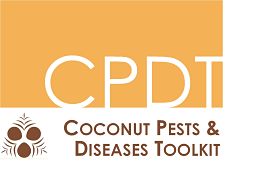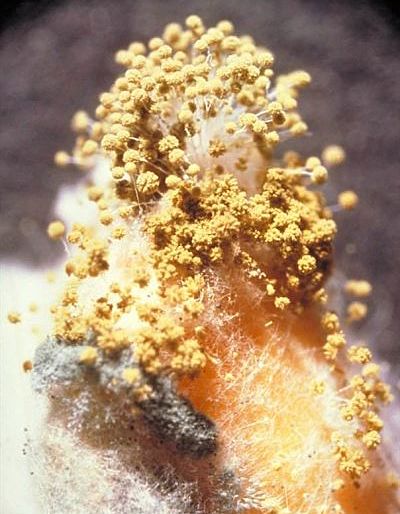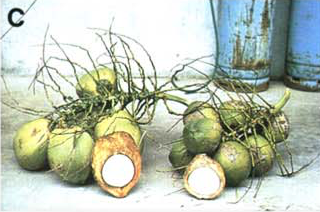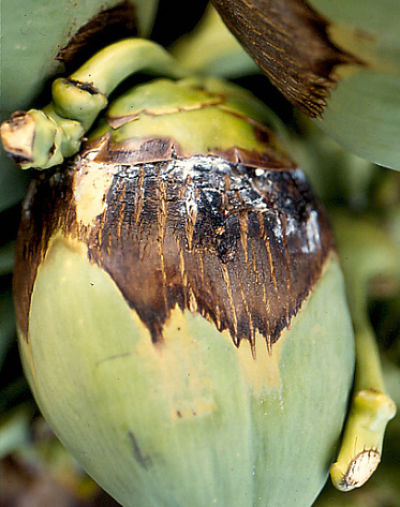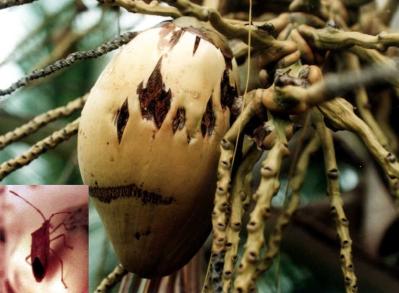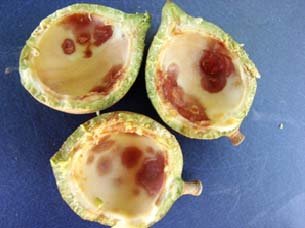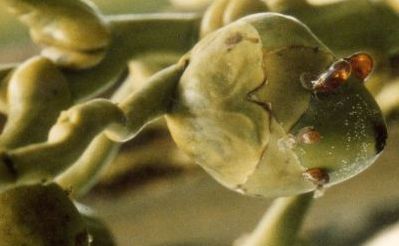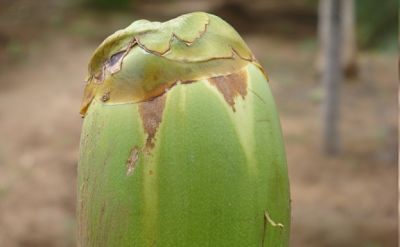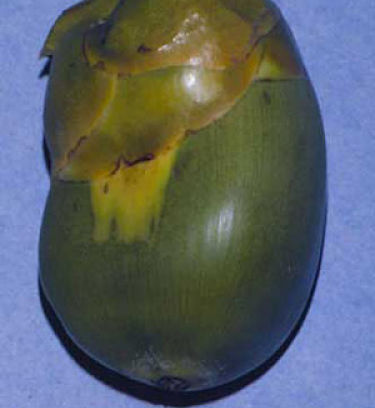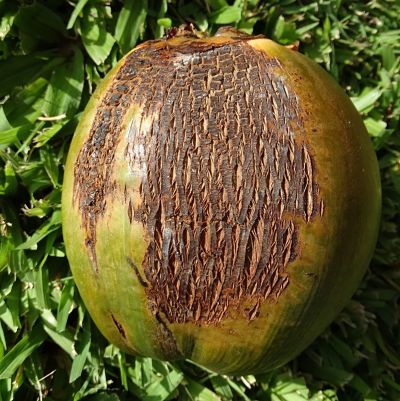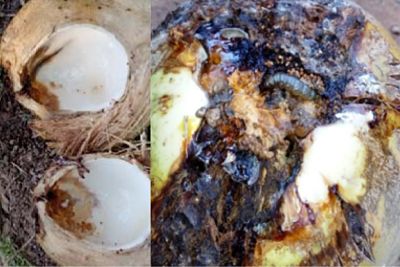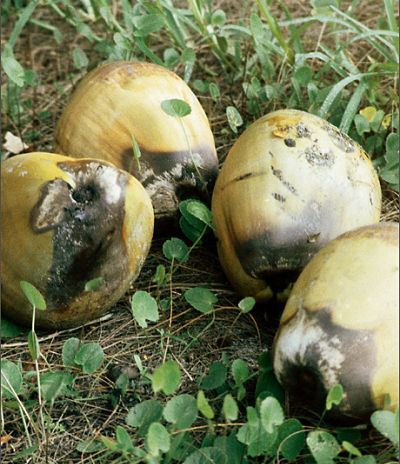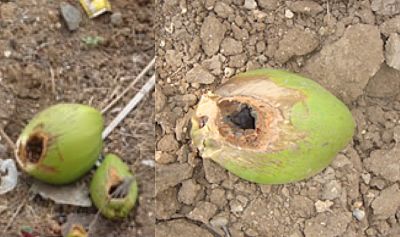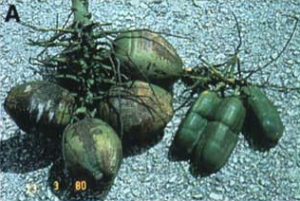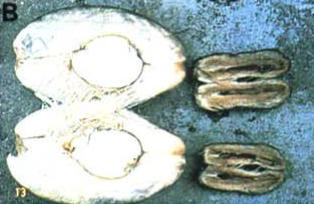Nut symptoms
These are some of the symptoms you might see on coconut nuts. Click on the possible causes of the symptoms to find out more.
Symptom |
Possible cause |
|
|
Yellow-green mould spores on fleshy part of the nut (© Franz E. Kohler, Kohler Collection) |
Aspergillus mould | |
|
Healthy nuts (left) vs. diseased rounded nuts with reduced husks (right) (© Dagmar Hanold and John Randles, Waite Agricultural Research Institute) |
|
Cadang-cadang (CCCVd) |
|
Scarring and discolouration to coconut from insect feeding and honeydew excretions (© Scot Nelson, Flickr) |
||
|
Deep brown cracks appearing on a nut from necrotic lesions made by a sap feeding bug (lower left corner) (© Bernhard Loehr, ICIPE) |
Additional symptoms of coconut bug include:
|
|
|
Young nut showing necrotic lesions internally made by a sap feeding insect (© Pieter Schalk Schoeman, Agricultural Research Council) |
Additional symptoms of coconut bug include:
|
|
|
Gum oozing out of from lesions made on a young nut (gummosis) by a sap feeding insect (© Bernhard Loehr, ICIPE) |
Additional symptoms of coconut bug include:
|
|
|
Initial symptoms on a young nut showing pale yellow triangular areas underneath the perianth (© James V. DeFilippis, University of Florida) |
||
|
Damage to a young nut, concentrated to the left side under the perianth causing uneven growth of the nut (© Forrest W. Howard, University of Florida) |
||
|
Enlarged brown area that looks cork-like with long narrow splitting and cracks. Appears after yellowing of these areas (Scot Nelson, Flickr) |
||
|
Young coconuts and their inflorescences showing a condensed mass of scaly insects. A closer look may show different sized, yellow to brown scale insects (© Bernhard Loehr, ICIPE, Bugwood.org) |
||
|
Nut halves showing brown staining at the site of boring by an insect larvae and on the kernel (L) and gum-like substance oozing out of the bored hole with larvae feeding (R) (© Rajesh K. Patel, AICRP (PALMS)) |
||
|
Nuts fallen before maturity with brown-black rot at calyx-end (© Nigel A. Harrison, University of Florida) |
Additional symptoms of lethal yellowing include:
|
|
|
Large holes (around 5cm in diameter) gnawed in to fallen nuts. Usually young green nuts (© TNAU) |
||
|
Healthy nuts (left) vs. diseased thin and small nuts with scarring (right) (© Dagmar Hanold and John Randles, Waite Agricultural Research Institute) |
Tinangaja | |
|
Healthy nuts (left) vs. diseased nuts showing no central kernel (right) (© Dagmar Hanold and John Randles, Waite Agricultural Research Institute) |
Tinangaja |
